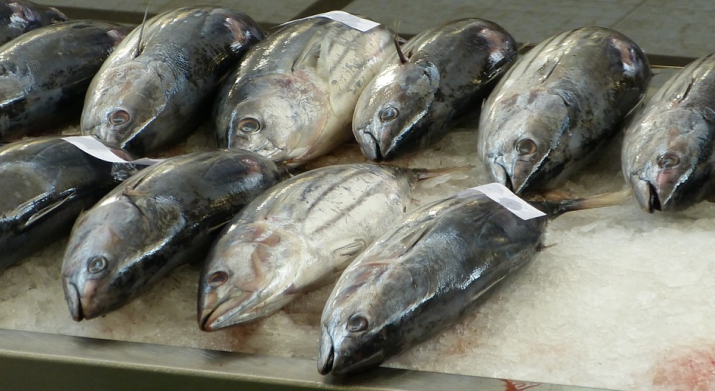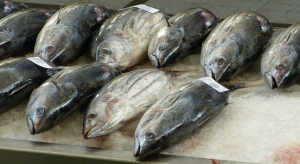
Clonorchiasis – causes, side effects and treatments at NaturalPedia.com
Saturday, February 17, 2018 by Ralph Flores
http://www.naturalpedia.com/clonorchiasis-causes-side-effects-and-treatments-at-naturalpedia-com.html

Clonorchiasis (also known as the Chinese liver fluke disease) is a disease caused by the Clonorchis sinensis, a parasitic worm from which the condition bears its name.
Chinese liver flukes are classified as trematodes, also called flukes, because of their suckers which they use to attach to a host (trematos, in ancient Greek, “means pierced with holes”). Aside from C. sinensis, there are other trematodes which can cause clinical infections. These are known as digenetic trematodes, and they infect other parts of the body such as the lungs, livers, intestines, and blood.
The condition is caused when a person consumes fish that have been infected with C. sinesis, in particular, those that have been poorly prepared or eaten raw. The flukes are endemic to Asia including Korea, China, Taiwan, and Vietnam; however, these have also been reported in non-endemic areas as well. In China, over 85 million people are infected with clonorchiasis.

Known risk factors and symptoms of clonorchiasis
Clonorchiasis begins when snails eat embryonated C. sinensis eggs in freshwater. After ingestion, the eggs hatch inside, and the infected snail releases larvae called cercariae into the water. These larvae then come in contact with the flesh of freshwater fish, where they become cysts called metacercariae.
Humans are infected by C. sinensis when they consume raw or undercooked freshwater fish that contain the cyst. When metacercariae enter the body, they travel to the intestine, eventually settling in the bile ducts and grow into adult worms. The adult worms then lay eggs, which go down through the intestine and excreted into fecal matter.
People who are at risk of clonorchiasis include those who eat raw or undercooked freshwater fish. This also applies to unprocessed, pickled, salted, or smoked freshwater fish. Those who also live near freshwater bodies of water in regions which C. sinensis is endemic also are more likely to get the disease.
Those who have clonorchiasis typically do not show any symptoms. However, people with acute infections may experience high fever, eosinophilia (an increase in eosinophils in the blood in response to parasite infections), and rashes.
People who have moderate (less than 1,000 worms) or high (up to 25,000) burden of worms may experience the following symptoms.
- Fevers (acute fever may occur in severe cases)
- Jaundice
- Weight loss
- Severe abdominal pain (colicky pain)
- Distention (the state of being swollen from internal pressure)
- Urticaria (or hives)
On occasion, symptoms that are similar to Katayama syndrome, another condition caused by parasitic flatworms, may also occur.
Infections from flukes result in mechanical obstruction of the bile ducts. This can result in inflammatory reactions in the liver, pancreas, and bile ducts in chronic cases. In severe cases, it can result in adenomatous hyperplasia (an abnormal enlargement of the organ) and periductal fibrosis (an injury of the bile ducts)
C. sinensis is a Group 1 agent, according to the International Agency for Research on Cancer (IARC). This means that chronic clonorchiasis can lead to cholangiocarcinoma, an often fatal form of bile duct cancer.
Aside from cancer, complications that may arise from chronic clonorchiasis include the following:
- Cholangitis – an infection in the bile ducts.
- Cholelithiasis – the formation of gallstones.
- Pancreatitis – the inflammation of the pancreas.
Body systems affected by clonorchiasis
Clonorchiasis primarily affects the bile ducts; however, complications can affect the pancreas and the liver.
Food items or nutrients that may prevent or relieve clonorchiasis
Clonorchiasis can be easily prevented — making sure freshwater fish is thoroughly cooked before eating them is the most effective way to prevent the infection.
When a person is infected, maintaining a healthy diet is key to managing the condition. A recommendation is to cut back on fatty and greasy food and to consume two to five cloves of garlic every day to manage parasitic and bacterial infections.
Treatment and management options for clonorchiasis
Currently, there is no effective treatment for clonorchiasis. However, the World Health Organization (WHO) recommends praziquantel in treating the condition at a dosage of 25 mg/kg for a period of two to three days or a single administration of 40 mg/kg.
When clonorchiasis has resulted in severe biliary obstruction, surgery may be needed.
Where to learn more
- Liver disease solutions proven to be safe and effective
- Seashore mangosteen, used for medicinal purposes in the East, found to protect the liver and inhibit cancer growth
- Warning Signs of Liver Disease You Need to Know
- New hope for liver disease: curcumin in turmeric spice fights liver damage and cirrhosis
- Non-alcoholic liver disease can be treated with phytochemicals
Summary
Clonorchiasis is a disease caused by the Clonorchis sinensis, a parasitic worm that is endemic to Asia. The condition is caused when a person consumes fish that have been infected with C. sinesis, in particular, those that have been poorly prepared or eaten raw. While there is no effective treatment for clonorchiasis, proper preparation of freshwater fish prevents infection.
Sources include:
Tagged Under: Tags: clonorchiasis





